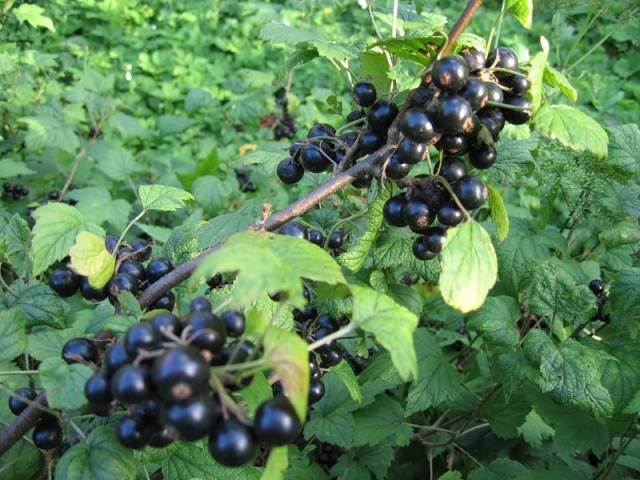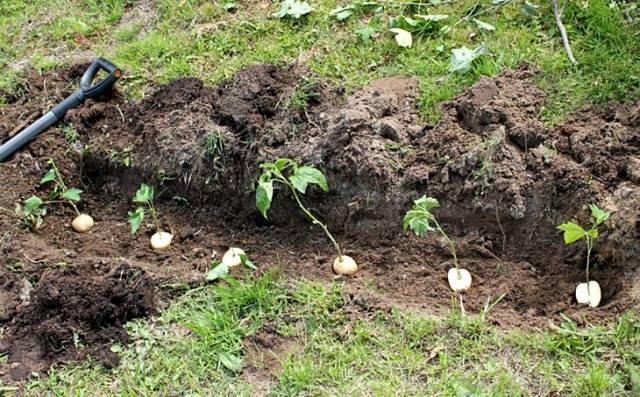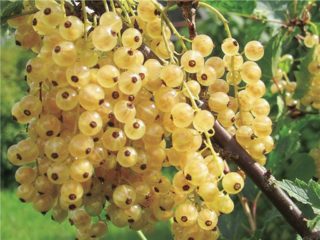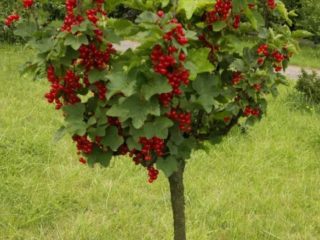Content
Today it is difficult for gardeners to choose black currants for the reason that the varietal diversity of the crop is too large. Each variety has its own advantages and disadvantages. Gardeners try to select bushes with large berries, easy to care for and productive.
One of these varieties is the Leningrad Giant blackcurrant. Back in 1974, the plant was zoned into the Non-Black Earth Region. The variety was recently removed from the State Register of the Russian Federation. But it is still grown in Russians’ garden plots.
Description of the variety
The authors of the variety are scientists from St. Petersburg State Agrarian University (LSHI) E.I. Glebova, A.I. Potashova. They pollinated the Stakhanovka Altai currant variety with pollen from the Vystavochnaya and Neosyshayushchaya varieties. In the seventies, when the Leningrad Giant variety appeared, the berries were considered the largest and lived up to the name. Today it is a berry bush with medium-sized fruits.
Bushes
The Leningrad Giant currant variety is a tall shrub with erect shoots. But under the mass of berries at the moment of ripening, the stems can spread out. The shoots of the first year of life are green, thick, and pubescent.Older branches can be distinguished by their grayish-beige color. Buds on perennial stems are arranged in groups of 6-8 pieces.
In accordance with the description, currants of this variety are characterized by short and plump egg-shaped buds with a blunt tip. They are pink-purple in color, sitting on a stem, slightly deviated from the shoot.
Leaves
Blackcurrant leaves are large and light green. The tops are yellow-green. The leaves are matte, bubbly-wrinkled. The veins are dark and clearly visible. Each leaf blade has five lobes, with the middle lobe wider and longer than the others, with a sharp tip. The side parts of the leaf are in the shape of a triangle, but the lower blades are located slightly obliquely.
Berries
Currants of this variety have clusters of different lengths, each with 6 to 13 flowers blooming. Fruit set is average, so the plant requires pollinators. The berries are round, black, shiny, weighing up to two grams. The calyx is small, the skin is thin. The fruits are juicy, tender, with a pronounced currant aroma and dessert taste. The photo clearly shows that the currant variety is productive.
The Leningrad Giant variety is valued not only for its excellent taste, but also for its usefulness. Currants contain:
- dry matter - 15.3-23.8%;
- sugar - 7.1-12.7%;
- free acids - 2.4-3.5%;
- ascorbic acid - 155.2-254.8 mg/100 g of raw berries.
Characteristics
As already noted in the description of the Leningrad Giant variety, as well as according to reviews, currants are gradually leaving their summer cottages.Although this is the wrong decision, because according to some indicators it can give odds to new varieties.
Advantages
- Receiving early products.
- The berries do not fall off.
- Due to its high winter hardiness, the plant can be grown in harsh conditions.
- From 3 to 4.5 kg of berries are harvested from one bush. When growing berry bushes on an industrial scale, the yield reaches 20 tons per hectare of plantings. The harvest is not bad, although compared to many modern currant varieties, the Leningrad Giant loses a little.
- Good taste and transportability allow the “old man” to remain on the Russians’ property.
- Possibility of mechanical harvesting, since the berries ripen almost simultaneously.
- Terry growth on plants is practically not observed.
Disadvantages of the variety
Since the Leningrad Giant blackcurrant was created in the 80s of the last century, breeders did not have the techniques that are used today.
That is why the variety has disadvantages:
- One hundred percent fertilization is possible in the presence of pollinating bushes, since self-fertility is only slightly above 50%
- Excessive fragility of branches that can break under the weight of filling grapes.
- This variety of currants is sensitive to spring frosts. Flowers exposed to low temperatures do not set.
- The plant is sensitive to powdery mildew.
But connoisseurs of the delicious Leningrad giant blackcurrant berries, as gardeners note in their reviews, are not deterred by the difficulties. They continue to plant bushes in the plots.
Planting currants
Currant Leningrad giant is a variety that is demanding on the soil and planting site. It is best to choose a sunny place on the site without drafts. Natural protection can be provided by fencing or building walls.
You can plant seedlings early in the spring, before the sap begins to flow, or early in the fall, so that the bushes can take root before frost.
Preparing the seat
Unlike many currant varieties, the Leningrad giant is picky about the soil. Excellent yield is only possible on well-amended soils. Poor podzolic soils and chernozems, as well as highly alkaline soils, are not suitable.
When planting in autumn, the pits are prepared two weeks in advance. The dimensions of the holes are at least 50x50x50 cm. If they plan to plant currants in the spring, then they are planted in the fall. Drainage made of medium-sized pebbles is poured into the bottom of the hole. In addition to regular soil, add 6-8 kg of compost or humus and two tablespoons of superphosphate to each planting hole. The soil and nutritional supplement are mixed before filling the hole.
Reproduction methods
New Leningrad Giant currant bushes can be obtained in different ways:
- cuttings;
- layering;
- dividing the bush.
Young currant shoots are capable of growing a root system. Cut them diagonally on both sides, leaving 4-5 buds. You can plant it directly in the ground or put it in water. Some gardeners growing currants from cuttings in potatoes, as in the photo below.
In the spring, bend the branch, press it with a bracket and sprinkle it with earth. In summer, monitor the condition of the soil. The top layer is not allowed to dry out. By autumn, a good root system is formed, the seedling is ready for planting in a permanent place.
Dividing the bush is the most common method of propagation. When the bush grows greatly, it is dug up and divided into parts. Each of them must have a good root system.
Step-by-step instruction
Before planting, seedlings are inspected. The branches must be alive and flexible. If signs of diseases or pests are found, the seedling is discarded. Not only will you not be able to get any products from it in the future, they can become sources of infection and infect all currant bushes.
The holes are placed at a distance of at least 100 cm, with row spacing of 1.5-2 m. This distance will be sufficient for caring for currant bushes of the Leningrad Giant variety.
A mound is made in the center of the planting site and a bush is placed on it. A peculiarity of planting currants of any variety is to install the seedlings at an angle of 45 or 60 degrees. This way the plants take root better.
The roots are spread over the entire surface of the pit and sprinkled with nutritious soil. The soil is lightly compacted and watered abundantly until it becomes muddy. This helps soil penetrate under the roots. Water will squeeze out excess air, and the root system will better adhere to the ground.
Features of care
According to the description of the variety, as well as reviews from gardeners, the Leningrad Giant currant requires pollinator neighbors.
As for the features of care, they come down to standard measures: watering and loosening, removing weed and feeding, as well as treatment against diseases and pests. If there is no precipitation, you need to water the currant bushes every week.One plant requires 2-3 buckets of water.
Simultaneously with watering, fertilizing is introduced. It is performed twice during the growing season. When the berries begin to fill, the bushes of the Leningrad Giant variety are fed leaf by leaf with any microfertilizer. At the beginning of the growing season, in early spring, nitrogen fertilizers are applied in liquid form at the root.
As noted in the description, the variety may suffer from spring frosts. Frosts of -2 degrees and below become destructive for it.
To protect flowers and ovaries, in the evening:
- Plantings are watered abundantly not only under the root, but also around the entire perimeter from above. At night the water will freeze, and under the ice coat (0 degrees inside!) the tassels with flowers and ovaries will remain alive.
- Cover the bushes with any material under which a positive temperature is maintained.
Gardeners often complain in reviews that Leningrad Giant currant branches do not withstand high yields and break. That is why in the spring the bushes must be tied to a support. You can drive in 4 pegs and tie them around the perimeter with thick twine or stuff them with slats.
Useful tips for caring for currants:
Rescue from illness
The Leningrad giant, according to descriptions and reviews from gardeners, suffers most from powdery mildew. To save currant bushes, as well as the harvest, the use of chemicals will be required, since traditional methods of combating the disease are too weak.
The first treatment is carried out in early spring, while the buds have not yet bloomed. For this you can use the drugs Hom, Ordan and others. The next spraying is carried out several more times after 14 days. Three weeks before harvest, preventive measures are stopped.
Recommended drugs:
- Colloidal sulfur (Tiovit Jet);
- Vectra, Topaz, Raek.
The affected currant bushes are treated with the preparations twice, alternating the products. 21 days before picking berries, any activities with chemicals must be stopped.















